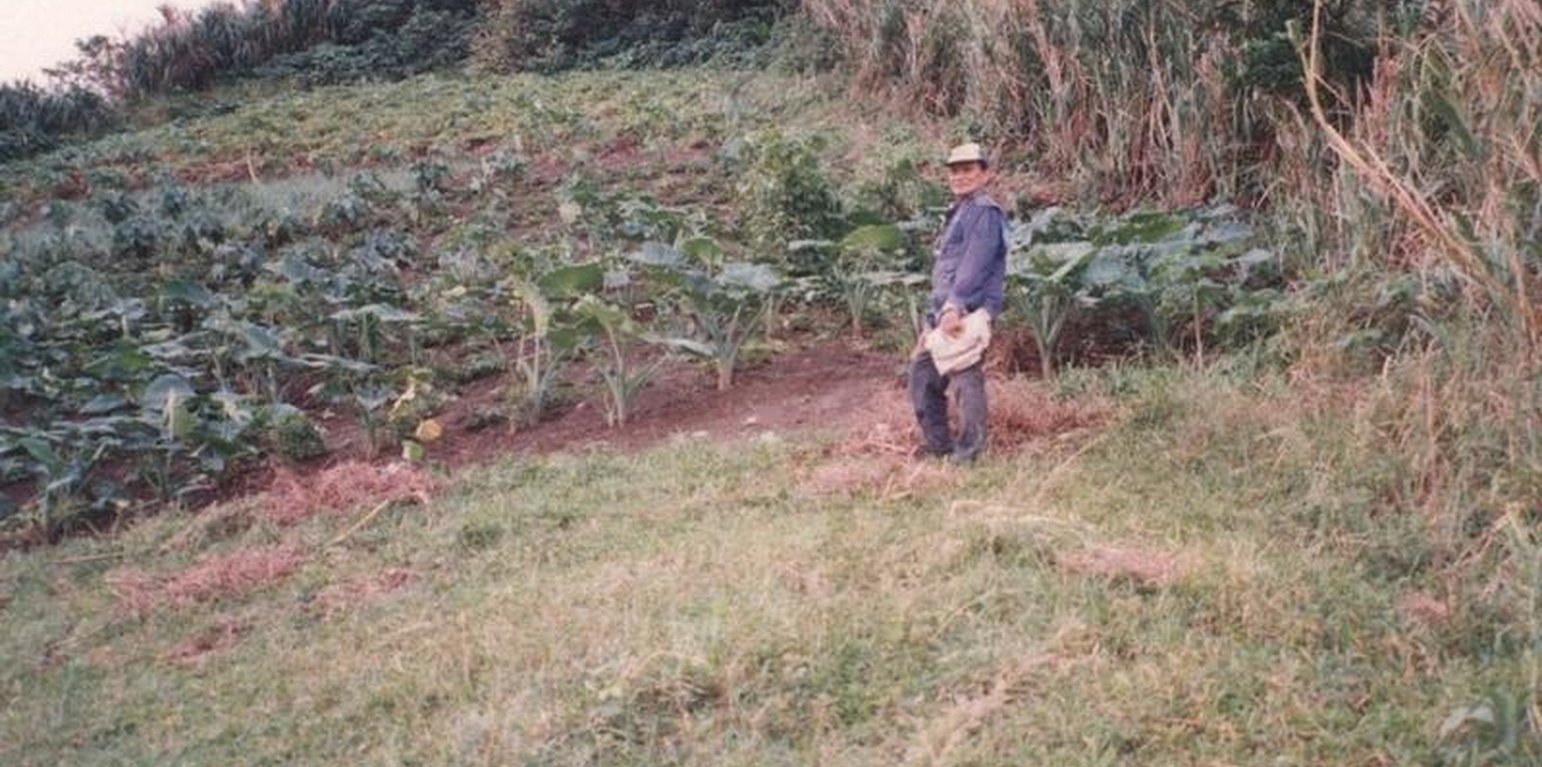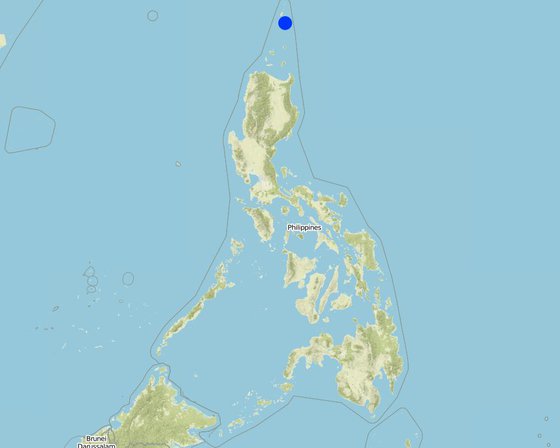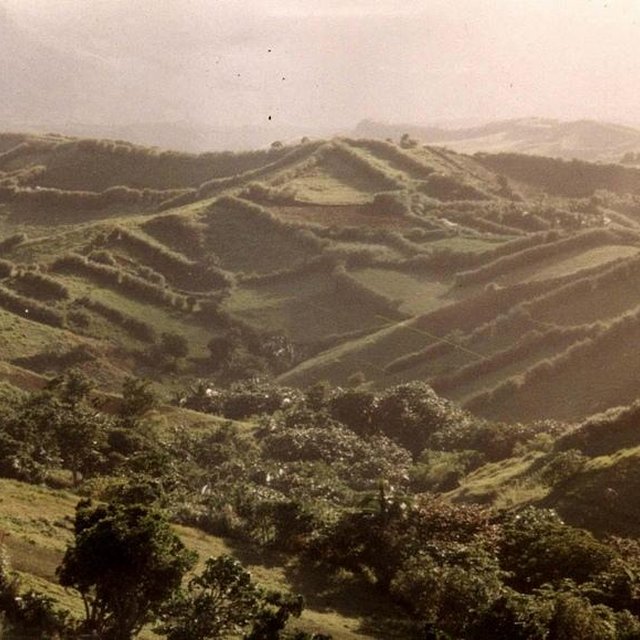



The main characteristic of the technology is the planting of herbaceous crops, grasses or trees along property boundaries. The grasses and herbs are occassionally cut and served as fodder or fuel. The trees are allowed to grow up to maturity which will then be felled for timber (construction) or for boat making. With time, especially when trees are used for boudary planting, individual fields look like boxes from the air. The choice of plants between two adjacent farms is agreed upon by the two landowner.
Purpose of the Technology: The boundary planting serves as windbreak to protect agricultural crops from wind damage. Other uses are fodder and fuelwood. The planting especially when done along the contours also trapped eroded soil from the upper portions of the field.
Establishment / maintenance activities and inputs: Planting is done once. The herbs and grasses are regularly cut to serve as animal feed. Trees are allowed to grow to maturity. Dead branches are gathered to be used as fuel.
Natural / human environment: The area where the technology is applied is frequently visited by typhoons. The climate is maritime and even at times when there are no typhoons, wind speed is still strong enough to cause damage to crops. Susceptibility to wind damage is further agravated by the nature of the terrain which is mostly hilly.

ສະຖານທີ່: Batanes, Batanes, Philippines, ຟີລິປິນ
ຈໍານວນ ພື້ນທີ່ ທີ່ໃຊ້ ເຕັກໂນໂລຢີ ທີ່ໄດ້ວິເຄາະ:
ການແຜ່ກະຈາຍຂອງເຕັກໂນໂລຢີ: ແຜ່ຂະຫຍາຍຢ່າງໄວວາໃນພື້ນທີ່ (approx. 10-100 ກມ 2)
ຢູ່ໃນເຂດປ່າສະຫງວນທີ່ບໍ?:
ວັນທີຂອງການປະຕິບັດ:
ປະເພດຂອງການນໍາສະເໜີ



fodder source --> medium 20-50%
conservation / erosion knowledge medium (20-50%)
socio cultural conflicts - little (5-20%) - conflicts between two adjacent farms possible
ປະລິມານ ກ່ອນການຈັດຕັ້ງປະຕິບັດ ການຄຸ້ມຄອງ ທີ່ດິນແບບຍືນຍົງ: 50
ປະລີມານ ຫຼັງການຈັດຕັ້ງປະຕິບັດ ການຄຸ້ມຄອງ ທີ່ດິນແບບຍືນຍົງ: 10
medium 20-50%
medium 20-50%
high 50-100% - dead branches, twigs